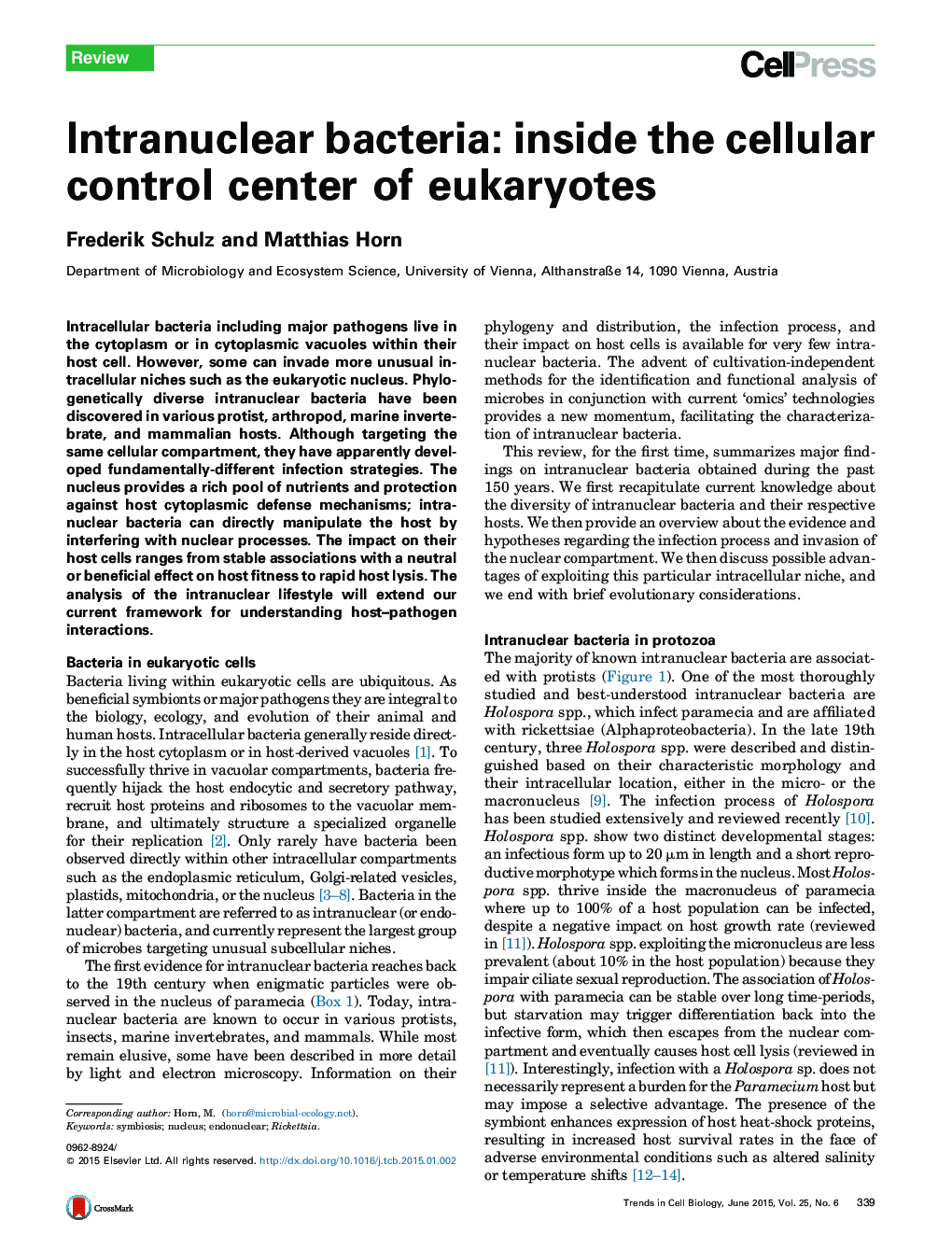| Article ID | Journal | Published Year | Pages | File Type |
|---|---|---|---|---|
| 2204372 | Trends in Cell Biology | 2015 | 8 Pages |
•Intranuclear bacteria have primarily been observed in protists but also occur in animals.•An intranuclear lifestyle evolved independently in at least three bacterial phyla.•Different molecular strategies are used to invade the nucleus.•Many intranuclear bacteria are parasitic, but stable associations are possible.
Intracellular bacteria including major pathogens live in the cytoplasm or in cytoplasmic vacuoles within their host cell. However, some can invade more unusual intracellular niches such as the eukaryotic nucleus. Phylogenetically diverse intranuclear bacteria have been discovered in various protist, arthropod, marine invertebrate, and mammalian hosts. Although targeting the same cellular compartment, they have apparently developed fundamentally-different infection strategies. The nucleus provides a rich pool of nutrients and protection against host cytoplasmic defense mechanisms; intranuclear bacteria can directly manipulate the host by interfering with nuclear processes. The impact on their host cells ranges from stable associations with a neutral or beneficial effect on host fitness to rapid host lysis. The analysis of the intranuclear lifestyle will extend our current framework for understanding host–pathogen interactions.
